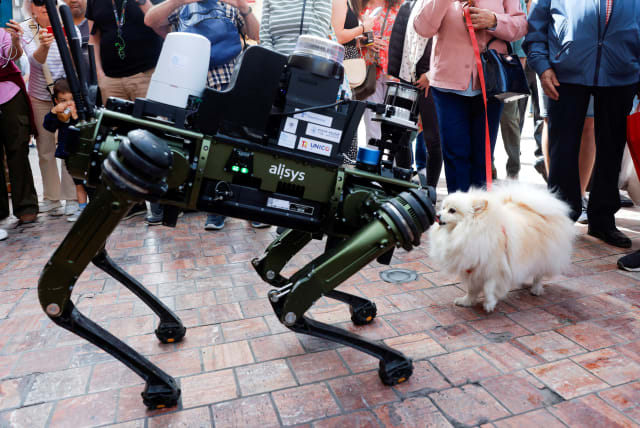Why can’t robots outrun animals like pumas and wildebeests? - study

Scientists expect robots to catch up to animals relatively quickly, but they're not there yet.
Many of us have seen impressive videos of humanoid robots that walk, talk, and even seem to think like people. But can they do anything and replace human workers? Can they run faster even than greyhounds or jump higher than pumas?
Robotics engineers have worked for decades and invested many millions of research dollars trying to create a robot that can walk or run as well as an animal. And yet, it remains the case that many animals are capable of feats that would be impossible for robots that exist today.
Animals are much better at running than robots. The difference in performance arises in the important dimensions of agility, range, and robustness.
“A wildebeest – an African member of the antelope family that resembles a cow – can migrate for thousands of kilometers over rough terrain; cockroaches can lose a leg but still run fast; and a mountain goat can climb up a cliff,” said Prof. Max Donelan of Simon Fraser University’s biomedical physiology and kinesiology department in British Columbia. “We have no robots capable of anything like this.”
He and colleagues at the University of Washington, the University of Colorado at Boulder; and the Georgia Institute of Technology have just published a study in the journal Science Robotics under the title “Why animals can outrun robots.”
To answer the question of why and how robots lag behind animals, they investigated various aspects of running robots, comparing them with their equivalents in animals, for a paper published in Science Robotics. The paper finds that, by the metrics engineers use, biological components performed surprisingly poorly compared to fabricated parts. Where animals excel, however, is in their integration and control of those components.
The researchers each studied one of five different “subsystems” that combine to create a running robot – power, frame, actuation, sensing, and control – and compared them with their biological equivalents. Until now, it was commonly accepted that animals’ outperformance of robots must be due to the superiority of biological components.
Robots have yet to catch up to animals
“The way things turned out is that, with only minor exceptions, the engineering subsystems outperform the biological equivalents – and sometimes radically outperformed them,” the authors wrote. “But also what’s very, very clear is that, if you compare animals to robots at the whole system level, in terms of movement, animals are amazing – and robots have yet to catch up.”
Optimistically for the field of robotics, the researchers noted that, if you compare the relatively short time that robotics has had to develop its technology with the countless generations of animals that have evolved over many millions of years, the progress has actually been remarkably quick.
“It will move faster, because evolution is undirected,” they added. “While we can easily correct how we design robots and learn something in one robot and download it into every other robot, biology doesn't have that option, so there are ways that we can move much more quickly when we engineer robots than we can through evolution – but evolution has a massive head start.”
More than simply an engineering challenge, effective running robots offer countless potential uses. Whether solving ‘last mile’ delivery challenges in a world designed for humans that is often difficult to navigate for wheeled robots, carrying out searches in dangerous environments, or handling hazardous materials, there are many potential applications for the technology.The researchers hope their study will help direct future development in robot technology, with an emphasis not on building a better piece of hardware but in understanding how to better integrate and control existing hardware. Donelan concluded that “as engineering learns integration principles from biology, running robots will become as efficient, agile, and robust as their biological counterparts.”
Jerusalem Post Store
`; document.getElementById("linkPremium").innerHTML = cont; var divWithLink = document.getElementById("premium-link"); if (divWithLink !== null && divWithLink !== 'undefined') { divWithLink.style.border = "solid 1px #cb0f3e"; divWithLink.style.textAlign = "center"; divWithLink.style.marginBottom = "15px"; divWithLink.style.marginTop = "15px"; divWithLink.style.width = "100%"; divWithLink.style.backgroundColor = "#122952"; divWithLink.style.color = "#ffffff"; divWithLink.style.lineHeight = "1.5"; } } (function (v, i) { });

